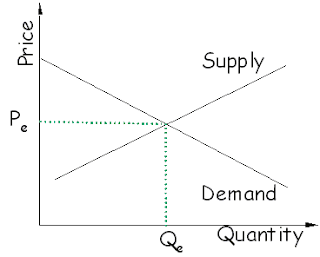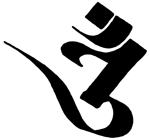 Economics is the study of to the production, distribution and consumption of goods and services. It is also a practical discipline in which the means of production, distribution and consumption are manipulated by agents in the economy to their benefit. Economists and their ideas dominate our society and have done for at least 100 years. The most fundamental assumption of economics - I recall from having studied it many years ago - is that resources are scarce. Economics seeks to show how dynamics like 'supply and demand' affect price and availability of scarce resources, and from them goods and services, and how markets can be manipulated to the benefit of some individuals or groups in the economy.
Economics is the study of to the production, distribution and consumption of goods and services. It is also a practical discipline in which the means of production, distribution and consumption are manipulated by agents in the economy to their benefit. Economists and their ideas dominate our society and have done for at least 100 years. The most fundamental assumption of economics - I recall from having studied it many years ago - is that resources are scarce. Economics seeks to show how dynamics like 'supply and demand' affect price and availability of scarce resources, and from them goods and services, and how markets can be manipulated to the benefit of some individuals or groups in the economy.But is this fundamental assumption accurate? Are resources scarce? A few months ago I wrote that one of the benefits of 10,000 years of civilisation, as well as one of the draw-backs, is a generalised surplus of food. [1] Months before that I commented on attitudes to obesity in the Western World. [2] How can anyone suggest that resources are scarce in a country where obesity is supposed to be the number one health problem? In fact we have a vast surplus of food and most people, including me, I have to admit, eat more than they need to. Indeed we have so much excess food in the UK that some authorities reckon that as much as 1/3 of food produced is wasted. [3] A rather contradictory picture emerges.
Resources are generally only scarce in the developed world because some people have far more than their fair share, and because we waste so very much of what we do have. Again in my blog 'Why Do We Suffer?' I mentioned that we tend to feel no sense of allegiance to strangers, no need to share our prosperity with them, and most of the people around us are strangers. There is not a great deal we can do about this because we have a limited capacity for human relationships - research suggests that we can keep track of about 150 personal relationships (one of the Dunbar Numbers). Some of us live in cities of millions, and the odds of meeting someone we know by chance can be very small indeed. Somehow we manage this. It's no surprise that the new technologies which have been most successful are the ones that help link people to their friends - internet and cell phones; or that drown out the pressing masses such as TV and media.
On the up side several of my friends work for charities and they report that on the whole people are generous with their money if asked for a contribution. I count myself fortunate to have grown up in, and to now live in, countries with welfare systems for the needy. To some extent we all contribute to the welfare of the many through taxes and other compulsory measures, but also through voluntary work.
But economics is set up to promote competition for scarce resources. The idea that unregulated markets will determine a fair price received what should have a death blow in 2009, as the extent of greedy speculation has been exposed, and the consequences are coming home to roost. But the problems were not new and financial markets had been producing scandals for at least a decade before the credit crunch - think of Enron back in 2001 for instance. The credit crunch shouldn't have been a surprise to us and the reasons that it was are relatively simple - greed at many levels, and an unwillingness to hear negative feedback. As far as I can see there is no sign that anything has fundamentally changed, and at least in the UK the main measures to pay for the excesses of the rich seem to be aimed at the the middle and the poor: bankers will still get multi-million pound bonuses, and the former Prime Minister, Tony Blair, has set up an elaborate company structure to avoid paying tax on the millions he earns as an individual these days. It's not just that the rich are getting richer, but more fundamentally the greedy are getting greedier!
What would the world be like if instead of competing for scarce resources we focussed on meeting basic needs first? If there is such a huge food surplus in the west then ought we not do something about redistributing it? Is competition the most important driver of progress? I recently came across an interview with Professor Lynn Margulis on BBC Radio. Margulis collaborated with James Lovelock in providing a scientific foundation for what is called the Gaia Hypothesis. In the BBC interview she debunked the idea that competition is the driving force of evolution. On the contrary Margulis argued that competition has "nothing to do with evolution". Evolution is driven by symbiosis and cooperation in her view, and the idolisation of competition is "rooted in Victorian patriarchal values". That eminent Victorian, Charles Darwin, was fascinated by the idea of competition weeding out the weaker members of the species for instance, and writes about it repeatedly in The Origin of Species, but seldom mentions cooperation. And yet where would the human race be if we did not cooperate? Economics is surely rooted in the same world view: survival of the fittest, and competition for resources weeding out the weakest competitors, with just a whiff of the idea that being a weaker competitor makes one somehow morally unworthy.
Just because an idea is ubiquitous and widely held to be true by pundits, does not always make it true. Does this, then, mean that I advocate communism? No, I don't advocate any kind of political system - attempts to implement communism have all run into the same problems that capitalist governments have struck. The problems are related to the fundamental problems of greed and hatred. It is not so much that the system is at fault, but the values which underpin it. I note that Marx was also a Victorian. The problem is this view that resources are scarce and that competition is the best way to ensure fair distribution of them. Both premises are demonstrably false: I live in a country with massive surpluses of basic commodities; and competition has consistently encouraged the greedy to be more greedy to the detriment of everyone. The same is true, I think, in most of the developed world. Ironically the other great trend of Victorian times was philanthropy and I associate it particularly, because of my former profession, with free public libraries. Now there is a model for building an enlightened society!
- Director of the British Museum, Neil MacGregor, makes much the same point about the abundance of food post the last ice-age because of improvements in agriculture in one of series of vignettes from the A History of the World in 100 Objects "Bird-shaped Pestle". See http://www.bbc.co.uk/programmes/b00nrtd2
- see my essay: Who's in Charge?; Dayamati has recently written on obesity in the USA: The Empire Strikes Fat.
- On food wastage in the UK see: 'Food wastage on a staggering scale' BBC Website. 2008; 'Campaign launched to reduce UK's £8bn food waste mountain'. The Guardian, 2007.
image: supply and demand curve from www.debunkingeconomics.com.







